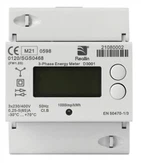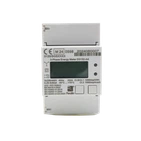Electricity is one of the most critical resources for modern society, and every building and infrastructure facility require it to run. To measure electricity consumption, an E1/E2 meter is installed in every home or business.
An E1 meter is a standard electricity meter that measures the amount of electricity consumed by a customer. This meter is mechanical and records electric consumption in kilowatt-hours (kWh) on a rotating disc, which directly indicates the electricity that has been used. This meter has an analog display and can be read directly by looking at the display. The E1 meter is commonly used in small households and small businesses.
On the other hand, an E2 meter is an electronic version of the E1 meter. It works similarly to the E1, the notable difference being that it has an electronic display, which allows the reading of the electricity consumption to be taken more accurately. The E2 meter has a digital display that can record the electricity consumed in real-time. The E2 meter is commonly used in larger homes and businesses.
To read the E1 meter, one should note down the displayed numbers from left to right, excluding any red dials. Each of the five numbers displayed indicates a figure in kWh. For example, if the display shows "01234," the reading would be 1234 kWh. The red dials show decimals and are usually ignored.
Reading an E2 meter is also a straightforward process. The E2 meter displays the consumption details in real-time, making it easier for the user to track how much electricity is being used. The display also records the exact time, which enables customers to keep track of when they use more energy and adjust their consumption accordingly.
The importance of monitoring energy consumption cannot be overstated. Knowing how much energy one is consuming is critical in managing energy costs. By monitoring energy meters, homeowners and businesses can identify and respond to any inefficiencies and energy wastage. This, in turn, leads to energy savings and cost reduction.
The E1 and E2 meters are essential tools in tracking energy consumption. Whether in a small household or a large business, these meters help users monitor their energy consumption accurately and make informed decisions about their energy usage. Understanding how to read these meters is crucial in managing energy costs and reducing energy wastage.




